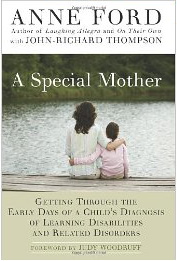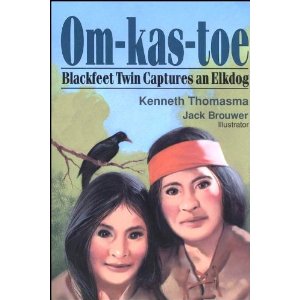This week was a good one to do the Outdoor Hour Challenge’s Spring Series #2 Spring Weather Observation since there has been a variety of weather: warm (in the 60s) and cold (in the 30s); rainy, snowy, and no precipitation; and windy and calm.
As with other posts:
Bold Typeface – is from the Handbook of Nature Study website where the Outdoor Hour Challenges are found.
Italic Typeface – is used for quotes from The Handbook of Nature Study book.
Regular Typeface – reflects my words.
Inside Preparation Work:
Read pages 851-854 in the Handbook of Nature Study. This section is not exactly about weather, but it ties in nicely with some springtime observations of the sun and its path. You might like to construct the Shadow Stick (page 852 #13) and make observations over the next few weeks and months with your children.
We ended up not doing this because for the majority of the week the weather has not been sunny. However, it does sound like it would be interesting to do, so we will revisit making a shadow stick during the summer when there are more sunny days.
At the very least, look up your sunrise and sunset times to calculate how much daylight you have now that it is spring in your area.
There’s an interesting website that will create calendars with different information that you want that relates to the times of sunrises, sunsets, moonrises, and moonsets as well as other items that you can select for a personal calendar. We found it interesting to compare the length of daylight and how much it had increased over a period of one month (1 hour and 27 minutes for our town).
Look in the section “The Relations of the Sun to the Earth” for this week’s reading.
Outdoor Hour Time:
Your Outdoor Hour time this week can be spent making observations about the weather. Enjoy whatever spring weather you are currently experiencing and spend 15 minutes outside looking at the sky, clouds, wind in the trees, dew on the grass, mud puddles after a rain, or whatever else you can experience in your part of the world.
Bailey (the pony) joined Sophia, Olivia, and I
on our nature walk this week.
A few things that we observed on our nature walk that didn’t relate to weather or clouds were: (1) a robin sitting on her nest; (2) male and female pussy willow plants growing near the pond; and (3) perennials growing in the garden.
A robin sitting in her nest in the oak tree.
I was able to see her build part of her nest
when I was on another nature walk.
The other thing we noticed is that the male pussy willows have moved from the catkin to the pollen stage, and now onto yet another stage.
Male pussy willow that has been through the
catkin and pollen stages. It’s in a third stage now.
In willow trees, male catkins grow on one tree, and different-looking female catkins grow on another.
Female pussy willow.
The plant has more delicate leaves and
doesn’t produce the catkins (as does the male pussy willow).
According to the Naturalist’s Almanac, “When bees first start looking for food in the spring, they head straight for the willow trees because willows are among the earliest pollen and nectar producers. The hungry bees gather some pollen from the male trees and then visit the female trees for nectar. The bees pollinate the willows unwittingly while they themselves are gathering food.”
After we were done with the walk, we took a quick look at the garden to see how the perennials are coming along. The rhubarb has grown quite a bit in a few days.
The rhubarb is growing quickly.
The raspberries are growing leaves (both the cultivated domestic kind as well as the wild kind), the strawberries are coming up, and the catnip had plenty of leaves so the girls could both pick some of it for the cats to enjoy.
Olivia picking catnip for the cats to enjoy (which they did!).
Suggested Observations
Have your children describe any clouds they see in the sky.
These clouds were moving in from the west. The girls described the clouds as “white” and “fluffy.” They noticed that the entire sky was not covered, and that the blue sky was showing (quite a change from the morning sky which was completely overcast, gray, and very dismal as it rained heavily for most of the day).
A bright sky and bright, white clouds
moving over the farm from the west.
Notice how hard the wind is blowing by how things are moving: leaves rustling, trees bending, etc.
There were little ripples in the pond, but the trees were not moving much. There have been much stronger (and scarier) winds here…this one was a pleasant, mild one.
There was a slight breeze, but it was warm enough
so the girls quickly took off their jackets.
Notice the wind’s direction. Where is it coming from?
The girls faced in the direction that the wind was blowing, and determined it was coming from the south.
The girls and Bailey are walking towards the
south part of the pasture. Notice the puddles…there’s
quite a bit of standing water after a day of heavy rain.
Describe the temperature of the air and/or look it up on a thermometer.
It was 54 degrees around 4:15-4:30 p.m. It was comfortable weather to be outside and do a nature study. However, it was about 11 degrees colder than yesterday afternoon at about the same time.
54 degrees means no coats and
almost “shorts weather” in Minnesota.
Notice any precipitation that you may have this week: sprinkles, rain, mist, sleet, snow, fog, hail.
There’s been quite a bit of precipitation this week: sprinkles, rain, sleet, and snow. The pond has fluctuated a bit with its depth and size, but seems to be of some depth which is nice. There were two ducks swimming in the pond in the late-afternoon. This is a special treat because the pond usually isn’t that deep for waterfowl to swim in – even at this time of the year.
The girls standing in one of the many puddles in the pasture.
The water in the puddles is quite murky. It may be because
the grass hasn’t grown in much yet and
there’s quite a bit of dirt showing still.
As we were exploring the pond area, a sudden movement on the ground startled us. We looked down to spot a frog. It let us look at it for a rather long time before hopping off to the southwest pasture.
Northern Leopard Frog by the pond in pasture.
We were surprised at how large this frog is – many of the ones that we see here are rather small (an inch or two in length). They can grow to be 2″-3.5″.
According to the Minnesota DNR site, “The leopard frog is called that because it is spotted, like a leopard. This was once the most widespread frog species in North America. But since the 1960s, its population here and throughout the United States has declined.”
The DNR site continues, “Minnesota’s leopard frog has been on a steady decline since the 1960s. Red-leg disease, pollution, pesticides and the loss of wetlands and other habitat are the main reasons. Leopard frogs are harvested for bait and for use in biology laboratories.”
If you made a Shadow Stick, make sure you spend one day marking the board every half hour from 9 AM to 3 PM. This experiment will need to be repeated again in June, September, and December if possible. (see page 852 #13)
We didn’t make a shadow stick because almost every day this week it seems like it has been either raining, sleeting, or a raining/snowing combination. We will make one to use in June, September, December, and March.
Follow-Up Activity:
Be sure to complete your Seasonal Weather notebook page. If you completed previous weather notebook pages, pull those out and compare the scenes you recorded in Autumn and/or Winter. Note that your days should be getting longer and any other differences you can find between the observations made in the past and now.
The girls and I each did an entry in our nature journals. In addition to what is shown below, each journal will include at least a couple of photographs from today’s nature study to add a different visual element to the entry as well as bring back memories of the time spent outside together learning about nature.
Olivia’s nature journal.
Sophia’s nature journal.
Sophia also did a second page in her journal listing some of the things she saw and heard during her time outside.
Sophia’s list of things she saw and heard.
Some of the 26 items on her list included: green grass, mushrooms, moss, a bird house, a baby pine tree,bird calls, the dogs, the sun, and chimes.
My journal entry.
Extra Information on Clouds
If you observed any clouds, you might like to download this lesson plan and cloud identifier activity for your children. This is a handy tool to use in cloud identification.
A few minutes before we started to head indoors,
the sun began to shine and try to move from behind the clouds.
Another view of the clouds – a bit more
to the northwest than the previous picture.
Read Full Post »



















































